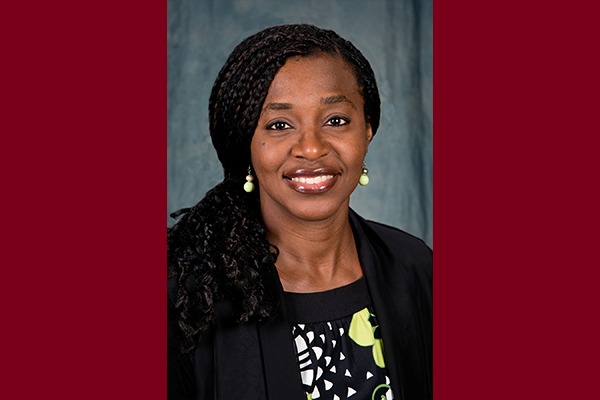Unveiling Racial Disparities in Health Care During the COVID-19 Pandemic
June 18, 2021

“COVID was new but the disparities were not,” she says.
The virus itself did not discriminate by race or ethnicity, so there had to be some other cause for why communities of color were more significantly impacted than white communities.
She began by reaching out to The National Association for the Advancement of Colored People (NAACP), Duluth Branch. The organization’s Health and Environment Equity Committee was interested in research on this subject and began a collaborative partnership with Okoro. Other agencies became involved as sponsors and some helped with the research. All the involved organizations “were able to come together and do this,” said Okoro.
A mixed-methods approach was developed to reach different groups of people and gather different types of information. A survey was sent out to reach as many people as possible. It focused on the knowledge people had about COVID-19 and what their prevention behaviors were. More in-depth information was gathered in focus groups and interviews, which concentrated on people’s perspectives and the impact the virus had on them.
The research included a wide variety of demographics to ensure everyone in the community was represented. Okoro says this was essential to the community-engaged research approach.
“We know that in a community you have different demographics and things impact people in different ways,” explains Okoro. “It is not just enough to hear from the leaders or just from the people who are advocates. We have people who are just moms, dads, young single adults, students; we need to get that very well-rounded perspective.”
The surveys showed people generally had good knowledge about COVID-19 because there was so much information available. The problem, Okoro says, was too much information. People did not know if the information they were receiving was valid.
Prevention behaviors differed between different age groups. Okoro reported that, “young people were less careful, but older people were probably more careful because it affected that demographic much more.” Among the young people who were careful, the research found their caution was motivated by the desire to protect the more vulnerable. It was evident there was a very culturally specific sense of community and a need to protect the elders, rather than concern for their own health.
In response to these findings, a website called HealthEquityNorthland.org was developed. The website is a place where COVID-19 information is constantly being curated, vetted, and updated by experts to ensure accuracy. The communication on the website is bi-directional, so people are able to go there to ask questions and health professionals will respond. The site also has video clips that answer commonly asked questions in layperson language to increase accessibility of the information. The website was designed, according to Okoro, out of the need for a “one-stop place where people could get information and trust that information.”
A series of community conversations have also been initiated. These conversations allow experts to share information with the community and for members of the community to ask questions.
The intention is to continue providing these resources beyond the COVID-19 pandemic. At that time, the resources will be focused around more general concerns regarding health and health care. Okoro notes that moving forward it is essential to address the structural inequities that have been highlighted during the pandemic in communities of color.
To get there, Okoro outlines key practices that must be implemented. First, health systems must be located in community spaces. These services must be in a place that is accessible, where community members feel like they have some ownership, and is in their space. Secondly, there must be more accessible and trustworthy resources available to increase the knowledge of health issues and practices. The final action Okoro recommends is to increase diversity in the health care workforce on every level. It is people from these communities who work best with persons from the same communities. They are able to bring more perspective and have better access to those communities to work with them.
As work toward these long-term goals continues, Okoro encourages health care workers to engage with communities to effectively work together and overcome COVID-19. She emphasizes communities must be engaged as experts in their own right because they understand their history and needs better than those from outside their community.
Although it is essential to address COVID-19 as it is happening, Okoro stresses long-term thinking because something will come after COVID-19.
“COVID was new, but the things, the impact, and the mechanisms through which we were seeing these inequities were not new. There has always been the health care system and the distrust of the health care system. There is inequity in access. There is care that is not responsive to community needs because you cannot do a one-size-fits-all.” Okoro emphasizes that within health care, there must always be a push for equity rather than equality.